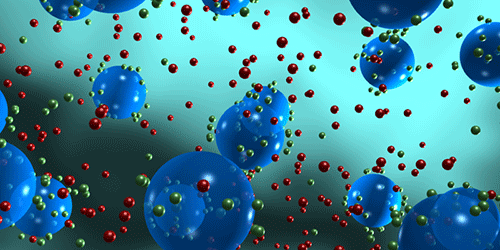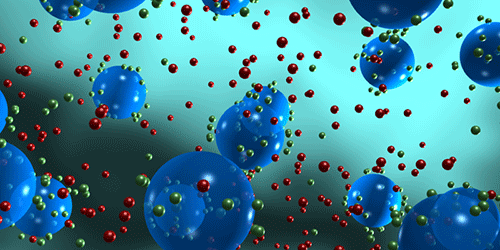Cell Sensing Improves in a Loose Crowd
Bacteria and other cells can sense chemical concentrations in their surroundings, and they sometimes communicate their findings to their neighbors. New theoretical work models this sharing of information and confirms that it improves sensing precision. The calculations also unexpectedly show that cells sense better when spread apart in a loose configuration, rather than being packed together “cheek to cheek.”
Cells often have receptors on their outer surfaces that allow them to detect a nutrient or other target chemical. This concentration sensing can affect the movement or morphology of the cells. Recent experiments have demonstrated that cells in a group are more sensitive to chemical concentrations than individual cells, but a general understanding of how this information is communicated is lacking.
In their model of concentration sensing, Sean Fancher and Andrew Mugler from Purdue University, Indiana, assumed that each cell produces “messenger molecules” in response to target molecules binding to the cell’s receptors. The number of messengers within a cell’s volume serves as a measure of the target concentration. The researchers considered two ubiquitous forms of cellular communication: juxtacrine signaling (adjacent cells share messenger molecules directly) and autocrine signaling (spread-apart cells share messengers by diffusion through the intercellular medium). In both cases, communicating cells exhibited higher sensing precision than isolated cells, as demonstrated by lower noise in the messenger signal. Moreover, spread-apart cells had better concentration sensitivity than adjacent cells, despite the former having weaker communication links. The authors’ explanation is that the separation reduces the effect of correlations, such as one target molecule interacting with two nearby cells. The results might explain, for example, why certain types of tumor cells adopt spacings of several cell diameters.
This research is published in Physical Review Letters.
–Michael Schirber
Michael Schirber is a Corresponding Editor for Physics.





